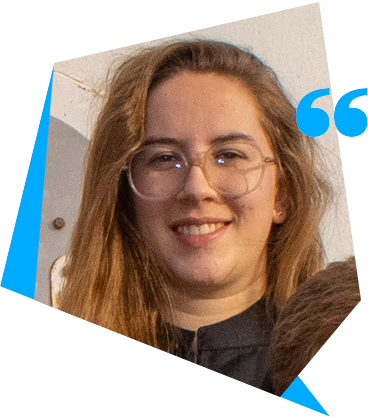< back to articles
Martian mission for Erin and crew 293
Published on
Every year, the ISAE-SUPAERO MARS Club organizes an MDRS mission with a new crew. The Foundation is proud to once again be able to support this project, which contributes to the Institute’s international reputation and enables Club students to get involved in the OSE L’ISAE-SUPAERO student social outreach program.

What is the MDRS project?
The initial aim of the project is tocarry out a similar mission in the UTAH desert, in the USA, in a recreation of a Martian space base called the MDRS (Mars Desert Research Station). The crew is made up of 7 students from ISAE-SUPAERO, all motivated by the same goal: to advance science and research in the world of space.
To this end, during the 4 weeks of isolation in the station, the crew will simulate life on Mars and carry out some fifteen scientific experiments, ranging from equipment tests to technology demonstrations and human factors experiments.
For the past 10 years, this mission has been carried out annually by various ISAE-SUPAERO crews. Every year, we aim to make the project more professional and recognized. With the help of numerous companies, laboratories (CNRS, …) and space agencies (CNES, ESA, …), we are able to carry out meaningful experiments and provide data to researchers to advance the search for human space exploration.
What was your project this year?
Erin Pougheon

This year, we had a lot of objectives that we managed to achieve:
- Firstly, we were able to provide data to researchers from all the experiments we had taken on board the station.
- Secondly, we were able to create and strengthen relationships between our mission, our crew and the space agencies. This year, crew 293 decided to forge a strong link with Spaceship FR, a CNES project to develop technologies for lunar and Martian exploration. This collaboration was fruitful, as several experiments supplied by the Spaceship FR were able to be taken with the crew to the station, and completed.
- One of our main objectives is to popularize science. From our privileged position as students, we are aware of the strong impact we can have on young pupils thanks to our project. So we set up an experiment with several middle and high school classes, with the help of the ISAE-SUPAERO OSE program. The students, transformed into researchers for the duration of the experiment, were able to create a protocol for us, and were delighted to see first-hand the results of the experiment they had devised.
What do you take away from this mission?
The MDRS mission has many strengths. As the project has been running for several years, and relations between past and present crews have been maintained, each crew can learn a great deal from the previous ones, and thus help the mission to evolve. Teamwork is an essential part of the project. For the students involved, this project represents an opportunity to work as part of a crew, to learn a great deal about themselves and teamwork, to share their passion for the space industry, and to gain professional experience in a field they are passionate about.


Photo credit: MDRS – crew 293
Any final word?
The entire 293 crew would like to extend its warmest thanks to the Foundation’s donors, who have been actively contributing to the success of this mission for several years now. Thanks to the Foundation’s donors, the ISAE-SUPAERO crews are able to push the limits of the project even further, and thus increase its impact not only on the students, but also on the space community!
To read all the mission reports of crew 293: click here